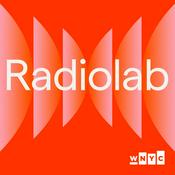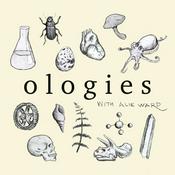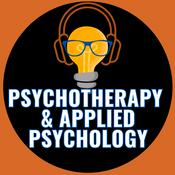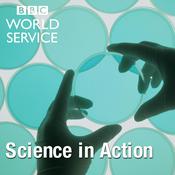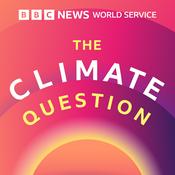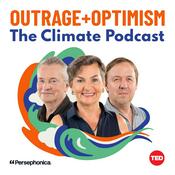149 episodes
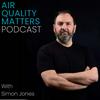
OT31: Fighting Fire With Fire - The Hidden Health Cost of Preventing Wildfires
18/12/2025
Welcome back to Air Quality Matters and One Take, where we unpack the latest research shaping our understanding of indoor air and the built environment. This week, we're diving into one of the most complex and urgent environmental dilemmas of our time: the smoke from fires we set on purpose. The paper, Associations between PM2.5 from Prescribed Burning and Emergency Department Visits in 11 Southeastern US States by a team of researchers from Boston University, Georgia Tech, and other institutions, tackles a critical question: In our effort to prevent catastrophic wildfires through prescribed burning, are we creating a different, more chronic health problem from the smoke of these "good fires"? The Environmental Dilemma: Prescribed burning—intentionally setting smaller, controlled fires to clear underbrush—is one of our primary tools to fight the catastrophic wildfires made worse by climate change. But this tool has side effects: smoke containing fine particulate matter (PM2.5). The question is whether we're trading one health disaster for another. The Study: Researchers analyzed over 30 million emergency department visits from 11 southeastern US states over nearly a decade—a region where prescribed burning is common practice. Using sophisticated chemical transport models, they "tagged" PM2.5 in the air to identify which portions came specifically from prescribed fires, allowing them to isolate the health signal of just these controlled burns. The Surprising Findings: Yes, there is a link. On days with high levels of PM2.5 from prescribed fires, there was a statistically significant increase in emergency department visits for upper respiratory infections and, most notably, ischemic heart disease, which went up by about 6%. But here's the counter-intuitive part: For the classic signatures of smoke exposure—overall respiratory admissions, asthma, and COPD—they didn't find a statistically significant increase. This is what makes smoke from prescribed fires different from wildfire smoke. Why the Difference? The nature of the fires themselves. Wildfires are hot, intense, and chaotic, burning everything from the forest floor to the canopy. Prescribed burns are cooler and slower, designed to smolder through underbrush, grass, and leaf litter. This difference in what's burning and how it's burning creates a different chemical cocktail of smoke. Prescribed fire smoke tends to have lower concentrations of pollutants like carbon monoxide and polycyclic aromatic hydrocarbons (PAHs) compared to wildfire smoke. The Big Takeaway: Not all smoke is created equal. The health impact of PM2.5 is not just about the mass of particles in the air—it's about what those particles are made of, and it depends profoundly on the source. This research doesn't give us an easy answer. It doesn't say prescribed burning is safe or unsafe. Instead, it gives us a much more nuanced picture. It's a powerful reminder that there are no easy wins in environmental management—it's all a game of trade-offs. We're using a tool to reduce the risk of catastrophic wildfires, but that tool has its own health risks, and those risks are different. This kind of research is absolutely vital for land managers and public health officials because it helps them understand the specific health impacts of their decisions, allowing for more targeted warnings and a better, more honest conversation about the risks we're actually choosing to manage. Associations between PM2.5 from prescribed burning and emergency department visits in 11 Southeastern US states https://doi.org/10.1016/j.envint.2025.109770 The One Take Podcast in Partnership with SafeTraces and Inbiot Do check them out in the links and on the Air Quality Matters Website Chapters 00:00:00 Introduction: The Prescribed Burning Paradox 00:01:48 The Study Design: Tagging Smoke from Good Fires 00:02:54 The Findings: A Surprising Health Signal 00:04:02 Not All Smoke is Equal: The Chemistry Matters 00:05:32 The Big Takeaway: Environmental Trade-Offs and Honest Conversations 00:06:40 Closing: Thanks and Next Week

From Thermal Comfort to Heat Stress: Buildings That Don't Overheat with Paul O'Sullivan - #102
15/12/2025
In this essential episode, we sit down with Paul O'Sullivan, lecturer in Sustainable Energy Engineering at MTU and co-lead of the MESO Research Group, to explore one of the most pressing—yet often overlooked—challenges in our built environment: how do we design buildings that don't overheat? Paul brings deep expertise in low-energy demand-side technologies, building retrofit strategies, indoor thermal environments, and ventilative cooling. His work sits at the fascinating intersection of thermal comfort, air quality, decarbonization, and the future resilience of our homes, schools, and workplaces. The Central Question We've spent decades designing buildings to be thermally comfortable in winter—airtight, well-insulated, energy-efficient. But in doing so, have we created a new problem? As our climate warms and our buildings become better at keeping heat in, how do we ensure they can also let heat out when they need to—without resorting to energy-intensive air conditioning? Key Topics Discussed: Thermal Comfort vs. Overheating: What's the difference between discomfort and a genuine health risk? Why overheating is not just about temperature, but about duration, vulnerability, and the capacity of a building to respond. The Unintended Consequences of Energy Efficiency: How our drive to decarbonize heating has created buildings that struggle to cool—and why Ireland's cooling season now starts in March. The Cooling Ladder: A design philosophy for tackling overheating—starting with prevention (solar shading, orientation), then modulation (thermal mass, phase-change materials), then dissipation (ventilative cooling), and only finally, supplementary mechanical cooling. Ventilative Cooling and the New CEN Technical Specification: How natural and mechanical ventilation can provide free, sustainable cooling—and why the European standard Paul helped develop is a game-changer for designers. The Performance Gap: Why buildings that look great on paper often overheat in reality—and why simulation tools are struggling to keep pace with the rate of climate change and building innovation. Agency and Adaptation: The power of openable windows, external shutters, and giving occupants control. Why buildings that allow people to adapt perform better—and why we've lost some of that agency in modern construction. This is a conversation about trade-offs, resilience, and the path forward. It's about recognizing that comfort isn't a luxury—it's a fundamental aspect of health, well-being, and productivity. And it's about designing buildings that work with their climate, not against it. DESCRIPTION: HOST: Simon Jones: https://www.linkedin.com/in/simon-air-quality-matters/ GUEST: Paul O’Sullivan - https://www.linkedin.com/in/paul-d-o-sullivan-441b9023/ The Air Quality Matters Podcast in Partnership with Zehnder Group - Farmwood - Eurovent- Aico - Aereco - Ultra Protect - The One Take Podcast in Partnership with SafeTraces and Inbiot Do check them out in the links and on the Air Quality Matters Website. If you haven't checked out the YouTube channel its here. Do subscribe if you can, lots more content is coming soon. Chapters 00:00:00 Introduction: Paul O'Sullivan and the Science of Thermal Comfort 00:02:18 Thermal Comfort vs Air Quality: Different Lenses on Indoor Environment 00:04:07 Maslow's Hierarchy: Is Comfort a Luxury or a Necessity? 00:05:34 The Decarbonization Dilemma: Energy Efficiency vs Thermal Comfort 00:09:31 Expectation and Adaptation: The Psychology of Thermal Experience 00:14:29 The Cooling Ladder: A Design Philosophy for Passive Solutions 00:15:44 Where Are We With the Science? Progress and Gaps in Thermal Comfort 00:24:07 Defining Overheating: From Discomfort to Health Risk 00:24:15 The Measurement Challenge: 20 Different Ways to Assess Overheating 00:27:52 Conditioned vs Free-Floating: Two Different Overheating Problems 00:37:09 Ireland's Paradox: Overheating in a Cool Climate 00:37:16 The Building as Battery: Thermal Mass and Night Cooling Strategies 00:52:55 The Performance Gap: Why Simulations Don't Match Reality 01:00:40 The Data Desert: Why We Don't Know How Our Buildings Perform 01:20:50 Behavior and Technology: The Human Element in Building Performance 00:49:07 Ventilation's Role: Free Cooling Potential and Air Quality Trade-offs 00:56:08 Heat Recovery Dilemma: Winter Efficiency vs Summer Cooling Needs 01:10:20 Hybrid Solutions: The Future of Resilient Cooling 01:40:55 Climate Shelters: Schools as Community Heat Wave Refuges 01:43:36 Double Jeopardy: When Heat Waves Meet Power Outages and Poor Air Quality 01:26:51 The MESO Research Group: From Ventilative Cooling to Citizen Science 01:29:44 Window Aerodynamics: The Forgotten Performance Metric 01:34:55 European Standards: Translating Research into Design Tools 01:48:26 Citizen Science: Engaging Occupants in Building Performance Research 01:51:30 The Path Forward: Data, Standards, and Human-Centered Design

OT30: Beyond the Numbers - What 95 Remote Workers Reveal About Home Office Wellbeing
11/12/2025
Welcome back to Air Quality Matters and One Take, where we unpack the latest research shaping our understanding of indoor air and the built environment. This week, we're diving into a paper that tackles a question millions of us have been living with since the pandemic: What actually makes a good home office? The study is titled Home as an Office: Investigating the Associations Between Indoor Environmental Quality, Wellbeing and Performance in Work From Home Settings, and it explores a fascinating tension—between what sensors objectively measure and what people subjectively experience. The Setup: Researchers recruited 95 people working from home in Vancouver and Seattle and used a clever two-pronged approach. On one hand, participants were given desktop monitors that objectively measured PM2.5, total VOCs, CO₂, temperature, humidity, and sound levels—the hard numbers on the physical environment. On the other hand, they conducted detailed questionnaires asking people about their perceptions: Are you satisfied with the lighting? Do you have an ergonomic chair? Does noise from family interrupt you? They also measured outcomes using standardized surveys for psychological wellbeing, physical symptoms, and work performance. The Core Question: Which is the better predictor of wellbeing and productivity—the objective data from the sensors, or the subjective feelings of the occupants? The Surprising Finding: The data from the objective sensors—the actual measured levels of PM2.5, CO₂, and so on—showed predominantly weaker associations with how people felt or how productive they were. Even if CO₂ levels were a bit high or PM2.5 was slightly elevated, in this study it didn't have a strong direct link to reported wellbeing or performance. Why? The authors suggest that indoor environmental quality in most homes was generally moderate, but more importantly, people have agency at home. If you're cold, you can change the thermostat. If the air feels stuffy, you can open a window. This ability to control and adapt seems to weaken the direct link between what a sensor measures and how people actually feel. The Perception-Based Data Tells a Different Story: When researchers looked at subjective perception, they found much stronger connections. Satisfaction with ergonomic furniture, good daylight, and a pleasant workspace aesthetic were all strongly linked to positive wellbeing and performance outcomes. People who felt good about their physical setup felt better and worked better. The reverse was also true. Problems like unwanted interruptions from family, noise from the street, or even persistent kitchen odors were strongly associated with lower psychological wellbeing, reduced vitality, and depressed mood. The Big Takeaway: The paper's core message is not that objective indoor air quality doesn't matter—of course it does, especially at extreme levels. But in the context of working from home, our subjective experience of the space is a much better predictor of our wellbeing and performance than what a sensor might tell us. Perception really is reality here. The feeling of being in control, having a comfortable and aesthetically pleasing space, and not being constantly interrupted—these are not just fluffy nice-to-haves. The study shows they have measurable, statistically significant associations with our mental health and productivity. The Implications: This challenges a purely engineering-led, sensor-driven approach to creating healthy buildings. It tells us we can't just focus on hitting certain parts per million. We need a more holistic, human-centered approach. When we design spaces for home working—or frankly, any space—we need to think just as much about ergonomics, acoustics, privacy, and personal control as we do about ventilation rates. Home as an office: Investigating the associations between indoor environmental quality, well-being, and performance in work-from-home settings https://doi.org/10.1016/j.buildenv.2025.113310 The One Take Podcast in Partnership with SafeTraces and Inbiot Do check them out in the links and on the Air Quality Matters Website Chapters 00:00:00 Introduction: The Home Office Question We've All Been Asking 00:01:35 The Study Design: Measuring Both Objective and Subjective Reality 00:02:55 The Surprising Finding: Sensors Don't Tell the Whole Story 00:03:32 The Agency Factor: Why Home is Different from the Office 00:04:05 Perception is Reality: The Power of Subjective Experience 00:04:41 The Problems That Matter: Interruptions, Noise, and Kitchen Odors 00:05:07 The Big Takeaway: Beyond Parts Per Million 00:05:53 Implications: A Human-Centered Approach to Indoor Spaces 00:06:40 The Validation: Your Uncomfortable Chair Really Does Matter 00:07:07 Closing: Thanks and Next Week

Breaking Down Silos: Why Industry-Academia Collaboration Is Key - #101 Bart Cremers
08/12/2025
In this episode, we sit down with Bart Cremers, Group Knowledge Consultant at Zehnder Group International, to explore one of the most critical—yet often overlooked—challenges in advancing indoor air quality: how industry and academia can collaborate more effectively. Bart occupies a fascinating position, straddling the worlds of industry and research, product innovation and scientific rigour. With deep expertise in physics, renewable energy, data analysis, and business development, he has spent years translating fundamental science into real-world ventilation solutions—and feeding real-world performance data back into the research community. The Central Question: We already have the tools and knowledge to deliver clean, healthy indoor air. So why is there still such a persistent gap between what we know works in the lab and what actually happens in people's homes? And how can we unlock the enormous potential that exists when industry and academia work together properly? Key Topics Discussed: The Two Silos: Why industry and academia often work on the same problems but from fundamentally different perspectives—and why bridging that gap is essential for progress. What Industry Brings to Research: Real-world performance data, field monitoring at scale, the ability to tell stories rather than just specs, and the crucial feedback loop between lab performance and lived experience. What Academia Brings to Industry: Scientific rigour, peer review, freedom to explore problems without immediate commercial pressure, and the discipline to ask—and answer—the right questions. The Speed Problem: Why academic research can take five or six years from conception to publication—and by that time, the technology being studied is often two generations out of date. The Performance Gap: Why so much academic research ends up measuring poorly installed or maintained ventilation systems—and what that means for our understanding of what good ventilation can actually achieve. Models vs. Reality: The critical importance of validating simulations and models with real-world data—and how industry can provide the field measurements academia desperately needs. The Minimum Becomes the Maximum: How regulations and standards, by nature, lag behind innovation—and why designing to minimum compliance is a race to the bottom that leaves everyone worse off. The Future: Ventilation as a Service: Why the shift from selling products to selling clean air and healthy outcomes could fundamentally transform the industry—and close the performance gap for good. Multifunctional Systems: The promise and peril of integrating ventilation with heating, cooling, and other building systems—and why we need to get the basics right first. Retrofit and Renovation: Why the next frontier isn't just new build, but bringing healthy indoor air to the billions of existing buildings—and why that requires a completely different approach. Citizen Science: The untapped potential of involving real people in real homes in the research process—not just as data sources, but as co-creators of the questions we need to answer. This is a conversation about friction, opportunity, and the path forward. It's about recognizing that both industry and academia have blind spots—and that the only way to truly advance indoor air quality is to work together, with mutual respect, shared goals, and a willingness to learn from each other's strengths. HOST: Simon Jones: https://www.linkedin.com/in/simon-air-quality-matters/ GUEST: Bart Cremers: https://www.linkedin.com/in/bart-kremers/ The Air Quality Matters Podcast in Partnership with Zehnder Group - Farmwood - Eurovent - Aico - Aereco - Ultra Protect The One Take Podcast in Partnership with SafeTraces and Inbiot Do check them out in the links and on the Air Quality Matters Website. If you haven't checked out the YouTube channel its here. Do subscribe if you can, lots more content is coming soon. Chapters 00:00:00 Introduction: Bridging Industry and Academia in Air Quality 00:03:17 The Two Worlds: Understanding Industry and Academic Perspectives 00:07:05 The Friction and Opportunity: Why Collaboration is Challenging 00:13:48 Real World vs Lab: The Performance Gap Problem 00:16:00 Communication Challenges: Telling Stories vs Presenting Specs 00:25:14 The Speed Problem: When Research Can't Keep Up with Innovation 00:33:26 The Value Exchange: What Industry Brings to Research 01:00:01 The Installation Crisis: Measuring Poorly Installed Systems 01:04:35 The Minimum Becomes the Maximum: Engineering for Redundancy 01:09:08 Closing the Gap: Training, Education, and Consumer Protection 01:15:31 The Future: Renovation, Smart Controls, and Ventilation as a Service 01:31:40 Multifunctional Systems: The Promise and Complexity of Integration 01:42:52 Closing Thoughts: Building for People in a Complex Future

OT29: From Every Minute to Every Hour - What 4 Years of Data Reveals About Sensor Placement
04/12/2025
Welcome back to Air Quality Matters and One Take, where we unpack the latest research shaping our understanding of indoor air and the built environment. This week, we're at a paper that tackles a fundamental question: Where exactly should we put indoor air quality sensors? How many do we actually need? And how often should they take readings? The paper is titled Long-term Indoor Air Quality Monitoring in Office Buildings: Data-Driven and Goal-Oriented Recommendations for Sensor Replacement and Sampling Frequency, and it's all about moving from guesswork to evidence-based monitoring strategies. The Problem: Existing standards are all over the place. One might say you need a sensor every 50 square meters, another says 325 is fine. One says sample every 15 minutes, another says 30 is okay. There's a real lack of clear, evidence-based guidance—and if you get it wrong, you're either spending a fortune on equipment you don't need, or you're collecting data that's useless or actively misleading. The Study: Researchers installed 16 sensors across three office sites in Shanghai and collected four years of data on PM2.5, PM10, and CO₂—taking readings every single minute. They then analyzed the spatial and temporal patterns to answer the critical questions: Does a sensor over here tell the same story as one over there? And what information do you lose if you sample every hour instead of every minute? Key Findings: Particulate Matter (PM2.5 & PM10): The dominant driver is outdoor air. Indoor PM levels tracked outdoor levels very closely, meaning infiltration is the key factor. For tracking general trends, you don't need a massive density of sensors—readings from different locations were highly correlated. CO₂: A Completely Different Story: CO₂ is generated indoors by occupants, and the study found huge differences depending on sensor location. Key factors included the type of HVAC system, room size, distance from windows, and proximity to air outlets. A single sensor in a large, complex office space just won't cut it. The Goal-Oriented Approach: Here's where the paper gets clever. The authors argue that we're often trying to do two different jobs with monitoring, and we need to separate them: Job #1 - Temporal Trend Monitoring: Understanding the big picture—daily cycles, seasonal changes, overall average conditions. For this, you can use about one sensor every 150 square meters, and sampling intervals of 90 minutes for PM and 130 minutes for CO₂ are sufficient without losing accuracy. This means less data to store, less energy use, and less maintenance. Job #2 - High Concentration Event Monitoring: Catching the bad stuff—short, sharp spikes in pollution when a meeting room fills up or outdoor smoke floods in. For this, you need much more frequent sampling: every 4 minutes for PM2.5 and CO₂, and every 15 minutes for PM10. You also need more sensors placed strategically in high-risk zones—large rooms, spaces with standalone AC units, and areas far from ventilation sources. The Big Takeaway: There's no single "right" way to monitor indoor air quality—it all depends on your goal. This paper gives us a data-driven framework for making that choice. If you want to understand long-term building performance, you can use a sparse network sampling infrequently. But if your primary goal is health and safety—protecting occupants from pollution peaks—you need a denser, targeted network sampling much more often. This is about being deliberate. It's about monitoring with purpose. Long-term indoor air quality monitoring in office buildings: Data-driven and goal-oriented recommendations for sensor placement and sampling frequency https://doi.org/10.1016/j.buildenv.2025.113392 The One Take Podcast in Partnership with SafeTraces and Inbiot Do check them out in the links and on the Air Quality Matters Website Chapters 00:00:00 Introduction: The Fundamental Questions of Air Quality Monitoring 00:01:35 The Problem: Inconsistent Standards and Guidance Gaps 00:02:02 The Study Design: Four Years of Data from Shanghai Offices 00:02:38 Particulate Matter Findings: Outdoor Air Drives Indoor Trends 00:03:14 CO2 Findings: The Complexity of Indoor-Generated Pollutants 00:03:47 The Goal-Oriented Approach: Two Different Monitoring Jobs 00:04:37 Trend Monitoring: Less is More for General Performance 00:05:19 Event Monitoring: Frequent Sampling for Health and Safety 00:06:15 The Big Takeaway: No Single Right Way to Monitor 00:06:59 Closing: From Good Ideas to Smart Strategies
More Science podcasts
Trending Science podcasts
About Air Quality Matters
Listen to Air Quality Matters, Making Sense with Sam Harris and many other podcasts from around the world with the radio.net app

Get the free radio.net app
- Stations and podcasts to bookmark
- Stream via Wi-Fi or Bluetooth
- Supports Carplay & Android Auto
- Many other app features
Get the free radio.net app
- Stations and podcasts to bookmark
- Stream via Wi-Fi or Bluetooth
- Supports Carplay & Android Auto
- Many other app features


Air Quality Matters
download the app,
start listening.


